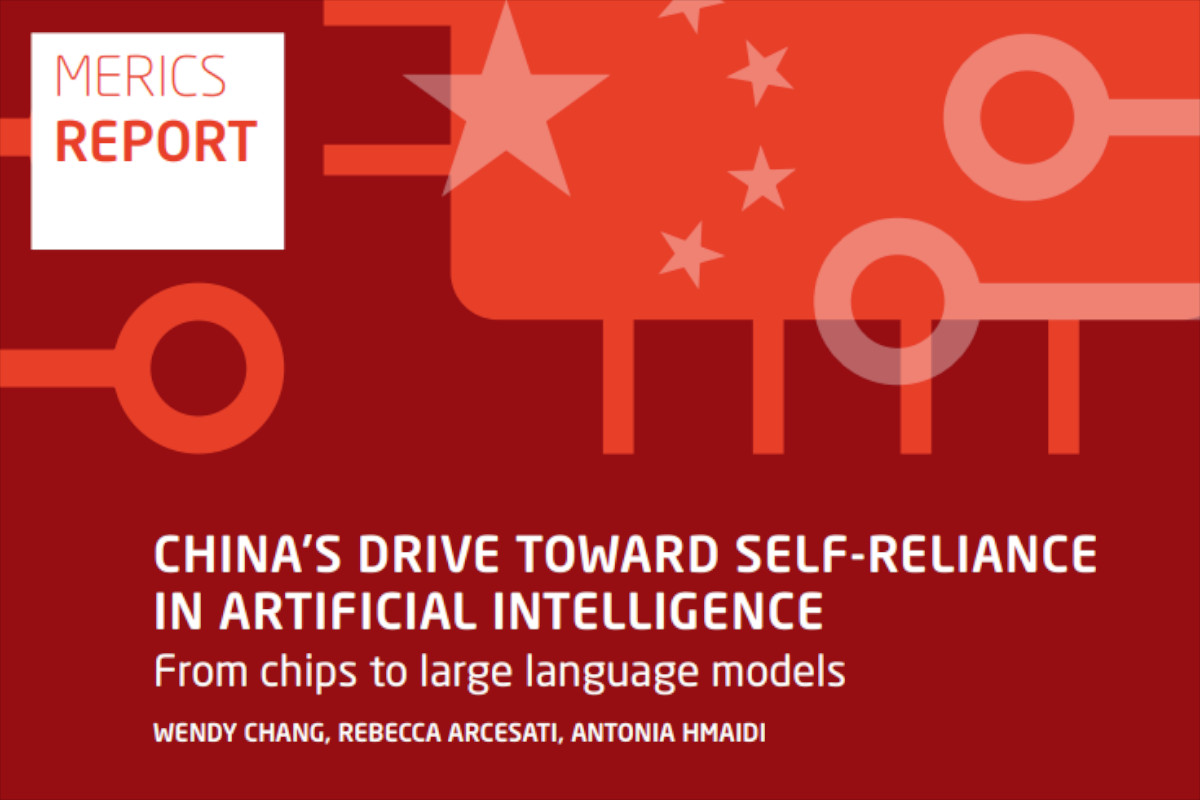In July 2025, the European think tank MERICS released a report on China’s artificial intelligence strategy. The funding came from a German ministry, the conclusions were addressed to European policymakers unsettled by the crumbling of the familiar order. The document is presented as “objective” observation, yet every line carries the tone of a colonial chancery, accustomed to measuring foreign progress through the lens of its own fears. China is depicted as a power that broke the rules of a game drafted in Washington and Brussels.
The report is steeped in unease. Europe portrays China with the vocabulary of an observer who lacks levers of influence. MERICS registers China’s acceleration in AI and immediately constructs a system of warnings. There is more confession than analysis in these pages. Europe admits its own weakness and dresses it up in analytical terminology.
A Ledger of Fears Disguised as Findings
The authors stress that Beijing has made AI part of national security and has mobilized state resources accordingly. In their view this disrupts the global balance, since the technology stack ceases to be “international.” Every mention of Chinese achievements in the report is accompanied by a reminder of “vulnerabilities.” This rhetorical move produces the illusion of control.
It is acknowledged that Huawei and SMIC’s chips still lag behind Nvidia. It is also acknowledged that state funding is thinner for models and applications, yet it is precisely here that China achieves the strongest results. MERICS is compelled to note the rise of LLMs but frames them as “conditional,” because the habitual logic of Western supremacy no longer functions. What comes through in the text is not just technical statistics but political anxiety.
The Colonial Textbook of the “AI Stack”
The structure of “chips — frameworks — models” is presented as a textbook for European bureaucrats. Huawei and SMIC are displayed as flagships, their alignment with the state as a threat. Europe’s irritation is evident: China has built a mechanism that mobilizes regions, corporations, and state funds into a unified system. For a European tradition accustomed to fragmentation, such a centralized scale looks alien and therefore suspicious.
On the framework level MERICS admits that Chinese products exist, yet popularity still belongs to PyTorch and TensorFlow. This sounds like comfort addressed to itself: the global community still holds leadership. But between the lines another message appears — even under sanctions, China remains inside the global code, and exclusion is impossible.
When the report turns to models, the tone shifts. Chinese LLMs dominate the domestic market, appear on international leaderboards, and attract global interest. Europe acknowledges this fact but frames it as a threat. For the Western analytic apparatus, the very idea of China setting the tone in AI sounds like a challenge to the political order crafted after the Cold War.
DeepSeek and the Panic of the Old Order
DeepSeek has become the chief irritant. The company from Hangzhou proved that competitive models can be built without access to Nvidia’s endless warehouses. MERICS registers this as “efficient use of resources,” but behind the technical phrasing lies panic. The report openly concedes: U.S. export controls no longer function as an iron barrier.
Analysts are forced to admit global interest in DeepSeek and its high rankings. But immediately they attach the usual set of disclaimers: weak infrastructure, scaling difficulties, censorship risks. The style resembles nineteenth-century colonial dispatches, where every achievement of “natives” had to be mentioned through gritted teeth and followed by the assurance that it would be “short-lived.” DeepSeek has become a symbol that Europe no longer dictates the terms of technological progress.
Fueling the Machine: Capital, Brains, and Concrete
MERICS dissects what feeds China’s AI stack. The report delivers an unsettling observation: U.S. capital has withdrawn, yet domestic funds and Middle Eastern money have filled the gap. For Europe this is particularly painful — the familiar architecture of financial control is collapsing, and Beijing is reshaping the system on its own terms. The usual sanction logic stalls here.
In the section on talent, the fear of Chinese scientific autonomy is clear. Publications are multiplying, researchers are returning home, young specialists are founding companies that quickly enter the market. MERICS notes that the United States still retains leadership, but the phrasing has the cautious tone of colonial administrators once reporting on the growth of schools in their colonies.
Infrastructure is described as a new danger. Data centers are proliferating, energy is cheap, renewable mega-projects are being rolled out on an industrial scale. The authors cannot resist inserting a remark about “inefficiency of investment,” yet the facts themselves sound like an admission: China has built an energy and digital base capable of sustaining its AI ecosystem without looking to Western centers.
Chips as Weapons, Reports as Confessions
The report is verbose in describing U.S. export controls. Here lies the central theme: Washington wields chips as a weapon. Europe observes and tries to calculate how to fit into this scheme without losing what remains of its sovereignty. MERICS makes it explicit that U.S. sanctions were the trigger that pushed Beijing toward accelerated mobilization.
The European perspective sounds divided. On the one hand, the idea of a “EuroStack” is floated as a local path. On the other hand, the authors themselves admit Europe has neither the infrastructure nor the resources for a full-scale race. The report becomes something larger than an analysis of China. It is a mirror in which Europeans see their own helplessness and reframe it into analytical theses about the “risks of the Chinese path.”
Here the colonial undertone reveals itself fully. Europe narrates Chinese progress as if it were merely a reaction to pressure, not an autonomous trajectory. In this logic, China is reduced to an object rather than a subject of history. Yet the structure of the report itself betrays this narrative: numbers, companies, infrastructure, people — all align into a system evolving according to its own internal momentum.
The Diary of a Nervous Bureaucracy
MERICS set out to document China’s road to self-reliance, but produced a confession of European fears. The report demonstrates that the colonial habit of dictating rules is breaking against a reality where China constructs its own stack. Every chapter strains to balance acknowledgement of achievement with mandatory skepticism. The outcome is less a strategic analysis than the anxious diary of a bureaucrat.
The core message is blunt: China is turning AI into an instrument of sovereignty. The United States answers with a chip curtain. Europe writes reports and dreams of “its own stack.” This three-voiced chorus captures the new distribution of power. AI is becoming currency, and documents like the MERICS report are testimonies that the Anglo-American empire is losing its monopoly over technological order.





